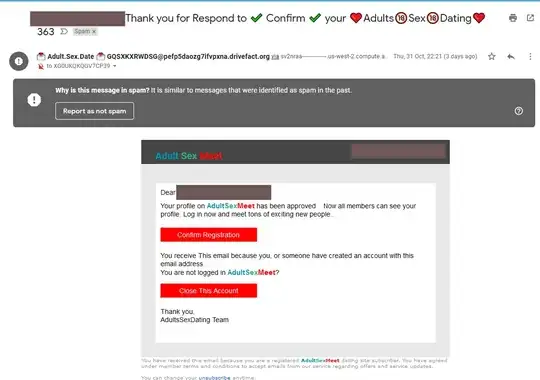I was reviewing my spam folder and spotted this:

People are going to have one of two reactions:
- Hooray! Free porn! Confirm, confirm, confirm! OR
- OMG! I didn't sign up for porn! Now everyone can see my profile! I'm so embarrassed! Close, close, close!
I inspected the buttons and links in the email and they are all <a> with mailto in the href with multiple addresses in the mailto. Many, many addresses. All different like backpackersworld.com and tasmaniatours.com.au and yandex.ru.
I have seen this methodology in a few emails now that I'm looking for it.
I'm trying to understand the point of this attack. Are they trying to harvest email address confirmations? My email address has been in countless breaches because "the internet". It's not a state secret. Seems a lot of effort to go to for something that is public knowledge.
I'm not sure what to warn my users about. "Don't click suspicious links ever. If you click this type it will expose your email address... er... some more."
What am I missing?
